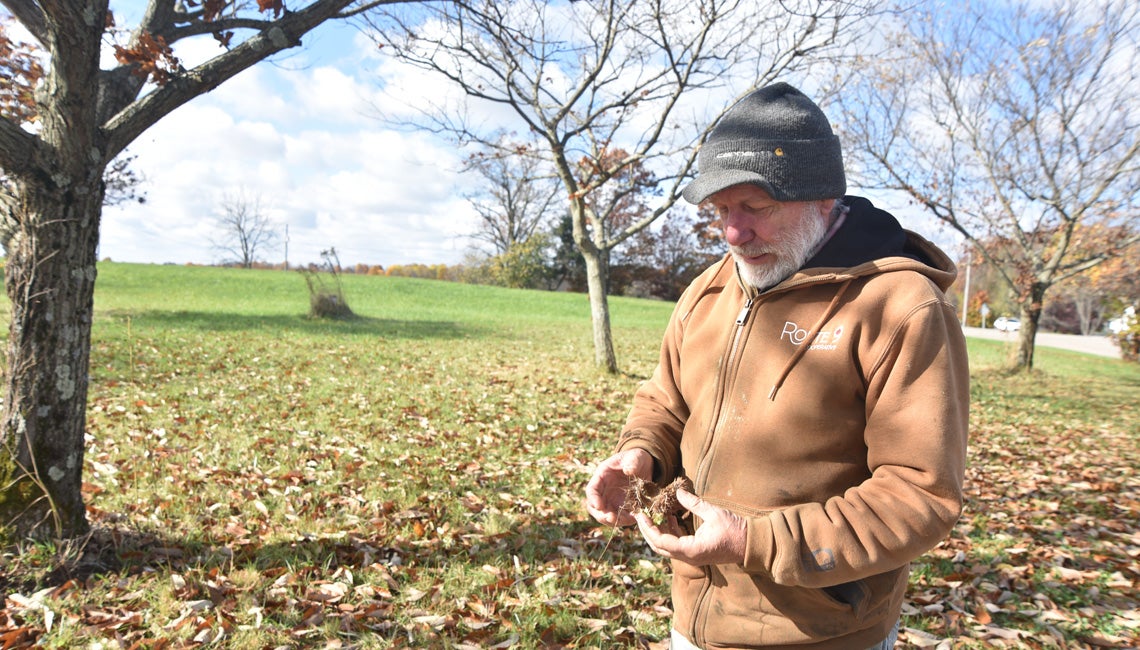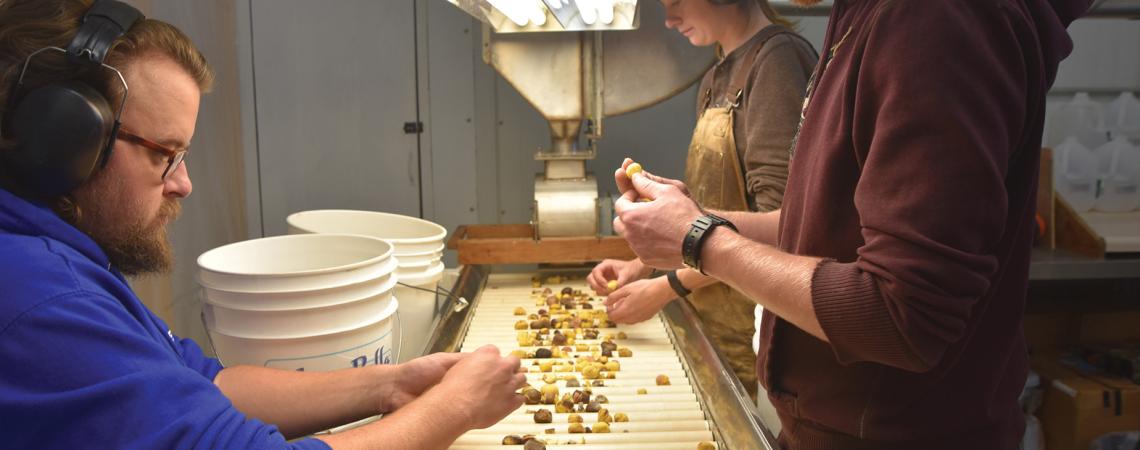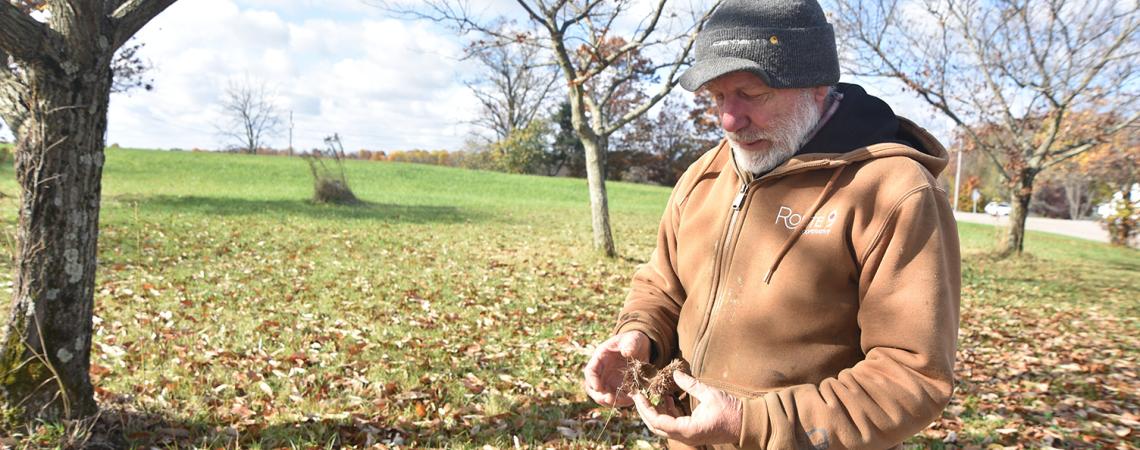Greg Miller’s father, Jay, planted his first bunch of trees on 100 acres in Carroll County back in the middle of the last century.
North America’s once-thriving population of American chestnuts had all but disappeared from the landscape due to a blight at the turn of the 20th century, so he planted blight-resistant Chinese chestnuts.
“He also planted every kind of nut tree that would grow here — and some that wouldn’t,” says Miller, a member of Carroll Electric Cooperative. “He noticed the walnuts and hazels and almonds and everything else weren’t doing so well, but the chestnuts were.” So more land was acquired and in 1972, Jay and Greg planted 500 more Chinese chestnut seedlings, and the Empire Nut Company was born soon thereafter.
Each September, more than 100 residents of the area, mostly Amish, show up to work the peak harvest — which means gathering the nuts by hand or using a rolling metal basket on a pole called a Nut Wizard.
At one point, Miller says, a local coal company took note of all those nuts and briefly entered the chestnut game as a side-gig. It soon went bankrupt, however; the folks who bought up the land were looking for deer hunting sites rather than an agricultural specialty crop.
Eventually, though, all those trees began producing high volumes of nuts, and about 20 years ago, Miller began harvesting, processing, and selling the neighbors’ crops — and thus was born the Route 9 Cooperative. Currently, Route 9 processes and ships nuts from more than a half-dozen farms, including one in Kentucky.
Treasure vault
The Chinese trees produce a nut that’s well protected right up until its dangerously sharp, spiked pod opens. Miller says the porcupine-like pods keep animals from eating the nuts too soon, but they also make it difficult to collect the delicious morsels.
“Once they open and the nuts fall out, everything eats them,” Miller says “They’re very high in carbohydrates, have a pretty high sugar content, and are high in oil and protein, so animals love them — and when I say that, I mean everything with four legs eats them, and some with two legs.”
After falling from trees in autumn, they’re collected by hand for processing. They go onto a grading table, where odd nuts are culled (later turned into chestnut flour) and sorted.
Most of Route 9’s crop is destined for the kitchen. Despite the common belief they’re solely a Christmas season snack, they’re a consistent yearlong seller. The vast majority are purchased online and shipped around the country.
“They’re often roasted, but they can be eaten raw, too, and they’re also put in various dishes,” Miller says. “They’re delicious.”
The gathering
Each September, more than 100 residents of the area, mostly Amish, show up to work the peak harvest — which means gathering the nuts by hand or using a rolling metal basket on a pole called a Nut Wizard.
Some customers, however, aren’t interested in ordering online or buying chestnuts that have already been collected. Instead, they prefer to show up in rural Carrollton to get their own. Route 9’s self-service customers travel from Columbus, Pittsburgh, Cleveland, and beyond to roam the hillside orchards gathering their own fresh-from-the-tree chestnuts.
“They’ll bring their kids out and enjoy just about the best time of year to be outside — late September, early October,” he says. “There’s something I think in humans’ nature: They love to gather things up. And yeah, people do it for fun.”
Huge, 25-pound bags are stored in giant walk-in coolers where they’re periodically hosed down with water while they await shipment. (Miller says they’re comparable to carrots in that you can eat them raw or cooked, and ideally you don’t want to let them dry out.)
Singular focus
In addition to selling chestnuts for snacking and cooking, Route 9 also sells nuts specifically harvested for seed planting, as well as small saplings. Miller also works with other chestnut varieties, including the European and Japanese trees, also grown for food, as well as several varieties planted for wildlife forage or for helping forest an area. That includes creating hybrid trees for specific uses like attracting wildlife.
But while some nut farmers have diversified their crops over the years, he’s found that the hilly, well-drained terrain around him is particularly suited to his specialty. “I just do chestnuts,” Miller says. “It was my father’s hobby. He planted his first trees in 1957 and I’m still doing it today.”
For information or to order, visit www.route9cooperative.com — though this year’s crop of culinary chestnuts is mostly sold out, the co-op is taking orders for fresh-peeled chestnuts, dry-peeled chestnuts, and chestnut flour, as well as seeds and seedlings.












